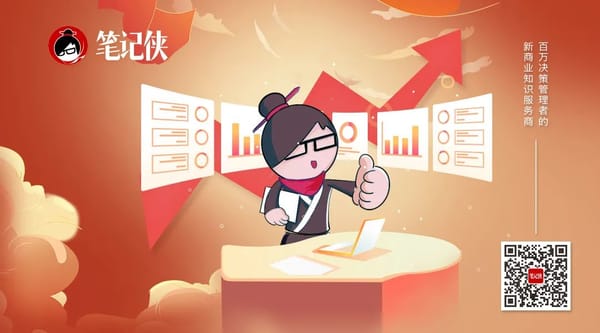Effective Error Handling: A Unified Approach for Heterogeneous Distributed Systems
Unified Exception Handling in Distributed Systems — Insights from Jenish Shah (Netflix)
Jenish Shah, a back-end engineer specializing in distributed systems at Netflix, shares practical strategies for handling failures in heterogeneous microservice environments. His work led to the development of a shared library that standardizes exception handling across protocols like REST, gRPC, and GraphQL.
---
💡 Key Takeaways
Microservices Are Protocol-Agnostic
- Microservices aren’t defined by a single protocol. REST over HTTP is common, but:
- gRPC excels at internal service-to-service (East–West) communication with high efficiency.
- GraphQL aggregates data from multiple services for external-facing applications.
- HTTP is better for large file uploads/downloads.
Graceful Degradation
- Even during failures, systems should provide partial results rather than nothing.
Exception Categories Across Protocols
Common categories regardless of REST/gRPC/GraphQL:
- Authorization – caller not allowed to invoke service.
- Validation – invalid/insufficient request data.
- Application – internal service errors.
- Dependency – failures in downstream services.
Observability Is Critical
- Track what failed, how it failed, and cascade effects.
- Provide actionable metrics for on-duty engineers.
---
📜 From Monolithic to Multi-Protocol Microservices
Evolution Beyond REST
- REST was default for both internal and external APIs due to JSON readability and HTTP standards.
- Limitations in HTTP/1.1 revealed the need for more efficient, low-latency protocols.
- gRPC introduced strong typing, binary encoding, and contract enforcement, ideal for high-volume internal calls.
Takeaway:
- Use REST/GraphQL for external-facing APIs.
- Use gRPC, queues, or streaming internally for speed and scale.
---
🛡 Handling Failures Gracefully
Why Context Matters
Poor error messages frustrate users.
Example:
> “Something went wrong.” ❌
Better:
> “Missing field: _First name_.” ✅
Best Practices
- Return accurate, protocol-specific codes:
- REST: `404 Not Found`
- gRPC: `NOT_FOUND`
- Implement an interceptor to:
- Detect exception type.
- Map to appropriate protocol response.
- Avoid repetitive boilerplate in each service.
---
📦 Jenish’s Netflix Exception Library
Design Pattern Overview:
- Four exception classes:
- `AuthorizationException`
- `ValidationException` (+ enums like `NotFound`, `OutOfRange`)
- `ApplicationException`
- `DependencyException`
- Protocol-Agnostic: business logic throws logical exceptions without knowing the protocol.
- Interceptor auto-maps these to:
- HTTP status codes for REST.
- gRPC status codes for gRPC.
- GraphQL error conventions.
Impact:
- Used by 150+ Netflix services.
- Central updates — no need to change every service individually.
- Reduces boilerplate, ensures uniform error handling.
---
📊 Observability Integration
Exception-Based Logging
- Warnings: misuse of service (`ValidationException`).
- Errors: critical failures.
- Flexible alerting rules:
- Example: Page immediately on firewall errors.
- Aggregate warnings for triage.
Metrics & Dashboards
- Track:
- Exception frequency.
- Caller patterns.
- Visual charts highlight misbehaving clients without log-diving.
---
📈 Choosing the Right Protocol
Protocol Selection Guide
- External Aggregations — use GraphQL.
- File Upload/Download — use REST.
- Internal, High-Frequency Calls — use gRPC.
Operational Considerations:
- Internal services can trust contextual retries.
- External APIs require stricter validation and less leniency.
---
🔄 Parallel in the Creator Economy: AiToEarn
Platforms like AiToEarn mirror this centralization approach for AI content:
- Generate once, publish anywhere — Douyin, Kwai, WeChat, YouTube, Instagram, X/Twitter, etc.
- Unified interface for distribution.
- Protocol/platform-specific adaptation done automatically.
- Integrated analytics and model rankings (AI模型排名).
For engineers and creators alike:
Centralized logic/pipelines reduce repetitive work and ensure consistent quality across heterogeneous environments.
---
✅ Summary Checklist — Unified Error Handling
For Back-End Microservices
- Categorize failures into Authorization, Validation, Application, Dependency.
- Implement interceptor pattern.
- Map exceptions to protocol-specific responses.
- Maintain a central shared library for reuse.
- Integrate with observability tools for logs, metrics, dashboards.
For Client-Facing Interfaces
- Provide clear, actionable error messages.
- Avoid generic “Something went wrong.”
- Ensure graceful degradation in partial failures.
---
🎧 Podcast Resources
- Do Microservices’ Benefits Supersede Their Caveats? — Sam Newman
- Observability in Java with Micrometer — Marcin Grzejszczak
Subscribe:
---
Final Thought:
Whether building distributed systems or cross-platform content pipelines, centralization of repeated logic — be it exception handling or publishing — unlocks scalability, resilience, and consistency. The design pattern Jenish Shah applied at Netflix and the multi-platform orchestration AiToEarn provides both exemplify the “build once, adapt everywhere” philosophy.



